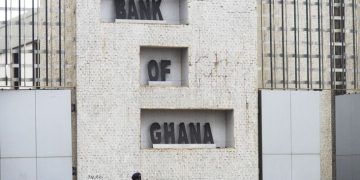China, the world’s second largest economy, has been facing a series of economic challenges that have led the authorities to take important measures to stabilise markets and revive its economy.
One of the main catalysts for the recession and economic contraction in China has been the strong measures taken by the government in the fight against Covid. We are talking about the so-called “Covid zero” measures implemented by the Chinese rulers for a longer period of time compared to other countries. These measures have led the world’s second largest economy to a significant and deep economic contraction.
In this article, we analyse the key factors that have contributed to this scenario, and the actions China has taken in its attempt to counteract the negative effects.
CRISIS IN THE FINANCIAL MARKETS AND THE FALL OF THE YUAN
One of the main problems that has hit China in recent times is the fall in confidence in the markets and the resultant depreciation of its currency, the yuan. Investors have been liquidating Chinese stocks, setting a record for massive outflows, which has led to increased volatility and uncertainty in the market.
MEASURES TO STABILISE FINANCIAL MARKETS
In an attempt to address this situation, the authorities have implemented a series of measures, such as asking certain investment funds to avoid or limit the sale of shares and encouraging listed companies on the technology Star Board to buy back securities. The People’s Bank of China (PBOC) has cut interest rates in the biggest decline since 2020, while taking tougher measures to try to fix the value of the yuan.
However, despite these efforts, markets have not responded positively, with the Hang Seng index accumulating declines of more than 8% so far this year. At the same time, concerns persist due to shrinking economic data, fears of deflation and problems in the property market, which have led to a crisis in the lending sector as collateral.
THE CHALLENGE OF THE REAL ESTATE SECTOR
The real estate sector, which accounts for a major part of China’s GDP and is vital to its economy, has been experiencing a significant slowdown. Large real estate companies such as Evergrande and Country Garden have faced defaults and major financial hurdles, leading to increased pressure on China’s credit market.
REFORMS AND STRUCTURAL CHANGES
The administration has sought to implement structural changes, prioritising state control in sectors such as e-commerce, online education, and ridesharing. Widespread tensions with the West, the alliance with Russia and declining foreign direct investment have also been factors contributing to China’s economic challenges.
DEBT CHALLENGES AND FUTURE PROSPECTS
The Chinese economy is facing major debt accumulated since the 2008 mortgage crisis, significantly limiting its ability to apply additional stimulus to contain headwinds. Although the stimulus measures are intended to counter a somewhat weak and tortuous economic recovery, the Chinese economy has so far failed to meet expectations following the reopening of the 2022 health curbs.
In short, China continues to struggle to regain its economic stability amid significant internal and external challenges. Despite the measures taken, the road to recovery remains fraught with uncertainty as leaders seek to boost consumption and revive the real estate sector as a cornerstone of their economic recovery strategy. According to the International Monetary Fund (IMF), China is forecast to grow by 5.2 per cent by 2023, yet uncertainty continues to linger in China’s economy.
Franco Macchiavelli is an Admirals Market Analyst and a Certified European Financial Advisor (EFA 35591).
Trading involves risk.
By Franco Macchiavelli, Market Analyst – Admirals.
Ends.
Disclaimer: The views expressed in this article reflect those of the writer and does not represent the official opinion of Admirals Group, or any of its affiliate companies. This article does not contain and should not be construed as containing investment advice, investment recommendations, an offer of or solicitation for any transactions in financial instruments. Trading involves risk.





































